Are you worried that your TPMS sensor might be bad? Well, you’ve come to the right place. In this guide, we’ll discuss everything you need to know about TPMS sensors and how to tell if they function correctly.
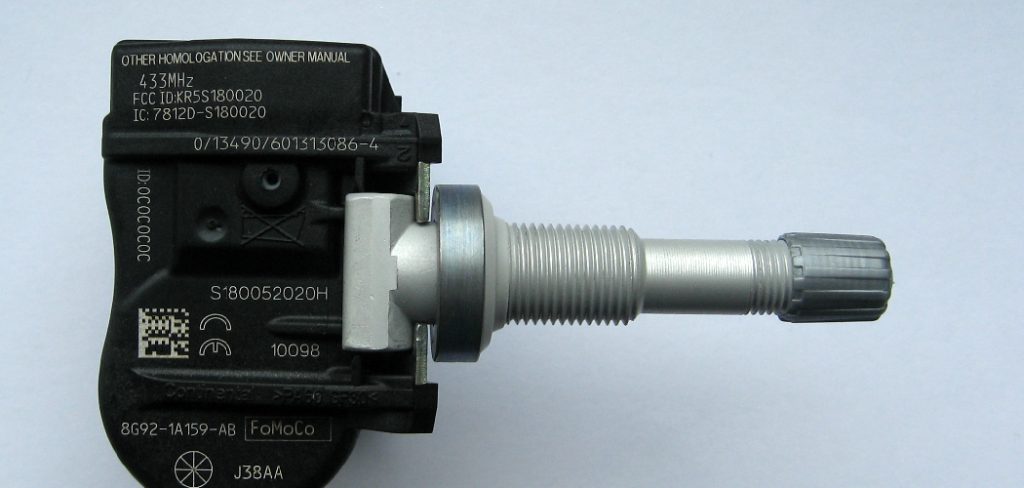
The Tire Pressure Monitoring System (TPMS) is an essential feature in modern vehicles, designed to enhance safety by alerting drivers when tire pressure is too low. However, like any automotive component, TPMS sensors can fail over time. Identifying a bad TPMS sensor is crucial for maintaining optimal tire performance, preventing potential accidents, and ensuring the longevity of your tires.
This guide on how to know if TPMS sensor is bad will cover the common signs of a faulty TPMS sensor and help you determine when it’s time for a replacement.
What Are the Causes of a Bad TPMS Sensor?
There are several reasons why a TPMS sensor may fail, including:
- Battery Failure: TPMS sensors use batteries to power the transmitter that sends signals to the vehicle’s computer. Over time, these batteries can wear out and cause the sensor to fail.
- Corrosion or Damage: The exterior of a TPMS sensor is exposed to harsh elements such as dirt, water, salt, and road debris. This exposure can lead to corrosion or physical damage that affects the sensor’s functionality.
- Faulty Wiring: The wires connecting the TPMS sensors may become damaged or disconnected due to wear and tear or accidents, causing them to stop transmitting data.
What Will You Need?
- TPMS Sensor Replacement Kit
- TPMS Sensor Programming Tool (if required)
- Jack and a jack stand or lift for raising the vehicle
- Tire pressure gauge
Once you have determined the issue with your TPMS, you will need to gather the necessary tools and replacement parts to fix it. Depending on the specific problem, some of these items may not be required.
8 Easy Steps on How to Know if TPMS Sensor is Bad
Step 1: Check for Warning Light
The first and most common indicator of a bad TPMS sensor is the appearance of the TPMS warning light on your vehicle’s dashboard. This light typically resembles a horseshoe-like symbol with an exclamation mark in the middle. When the TPMS warning light illuminates, it signals something is wrong with your tire pressure monitoring system.
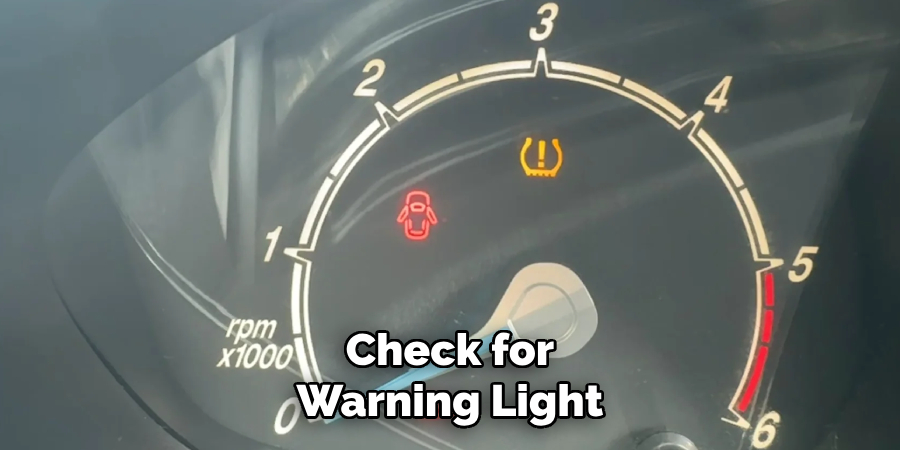
Start by turning the ignition to the “ON” position and observing the dashboard to see if the warning light comes on. Suppose the light blinks for a few seconds before remaining steady. In that case, it may indicate a different issue, such as a sensor battery nearing its end of life or a communication problem between the sensor and the vehicle’s system. If the light is steady, it is more likely that one or more TPMS sensors are malfunctioning or your tire pressures are off.
Step 2: Check the Tire Pressures
After checking the warning light, ensuring that all tire pressures are at the recommended level is essential. This information can usually be found on a sticker in the driver’s side door jamb or in your vehicle’s manual. Use a tire pressure gauge to check each tire and compare the readings to the recommended levels. Any tires with significantly low pressure could indicate a leak or puncture.
Step 3: Inspect TPMS Sensors
Inspecting the TPMS (Tire Pressure Monitoring System) sensors is crucial in diagnosing issues related to the tire pressure warning light. Start by visually examining the valve stems of each tire, as these are the most accessible parts of the sensors. Look for any visible damage, cracks, or signs of corrosion that could interfere with the sensor’s ability to monitor tire pressure accurately.
If you suspect a problem but do not see any apparent damage, it may be necessary to use a specialized TPMS tool to read the sensor’s data directly. This tool can help identify faulty sensors, low battery issues, or connectivity problems within the system. If a sensor is defective, it should be replaced promptly to ensure proper monitoring of all tires. Additionally, ensure that the system is recalibrated or reset according to the vehicle’s manual to confirm accurate readings in the future.
Step 4: Maintaining the TPMS System
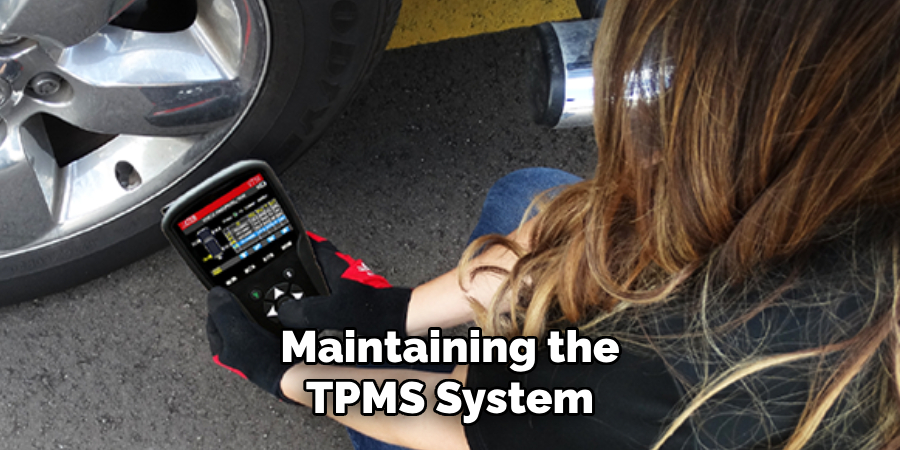
Regular maintenance of the Tire Pressure Monitoring System (TPMS) is essential to ensure its long-term functionality. Periodically inspect the sensors during routine tire rotations or replacements and check for any physical damage or corrosion.
It is also advisable to replace the TPMS sensor batteries according to the manufacturer’s recommended schedule if they are not built-in and sealed. Keeping the sensor components clean and debris-free will help the system function optimally. Refer to the vehicle’s manual for specific guidelines and take prompt action if any warning indicators appear on the dashboard.
Step 5: Test the TPMS
To ensure that your TPMS is functioning correctly, you can perform a simple test to check the accuracy of the sensor readings. This can be done by comparing the tire pressure readings from your vehicle’s TPMS with a reliable handheld gauge.
Firstly, ensure all tires are properly inflated according to the recommended pressure for your vehicle. Then, drive your car at highway speeds for a few minutes and check if the TPMS warning light turns on. If it does, this could indicate an issue with one or more of your sensors.
Next, park your car in a safe location and turn off the engine. Use a handheld tire pressure gauge to measure the actual pressure in each tire. Compare the readings to the recommended pressure for your vehicle and adjust accordingly.
Step 6: Look for Any Physical Damage or Debris
If your tire pressure seems correct but the TPMS light is still on, there could be physical damage to one of your tires. Carefully inspect each tire for any signs of punctures, cuts, or bulges. If you find any, this could be causing a loss of pressure and triggering the warning light.
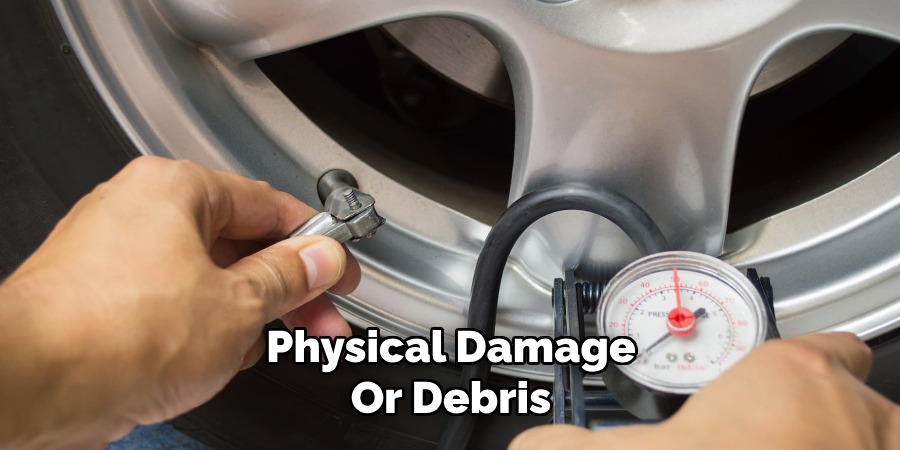
Additionally, check for any debris stuck between the treads of your tires. Small rocks or other objects can get lodged in your tires and cause them to lose pressure over time.
Step 7: Reset the TPMS system
To reset the TPMS system, consult your vehicle’s owner manual for specific instructions tailored to your make and model. Most vehicles have a reset button located near the steering wheel or under the dashboard. With the car stationary, turn the ignition to the “On” position without starting the engine. Locate the reset button and hold it down until the TPMS warning light blinks several times, then release it. Start your car and wait a few minutes to check if the warning light turns off.
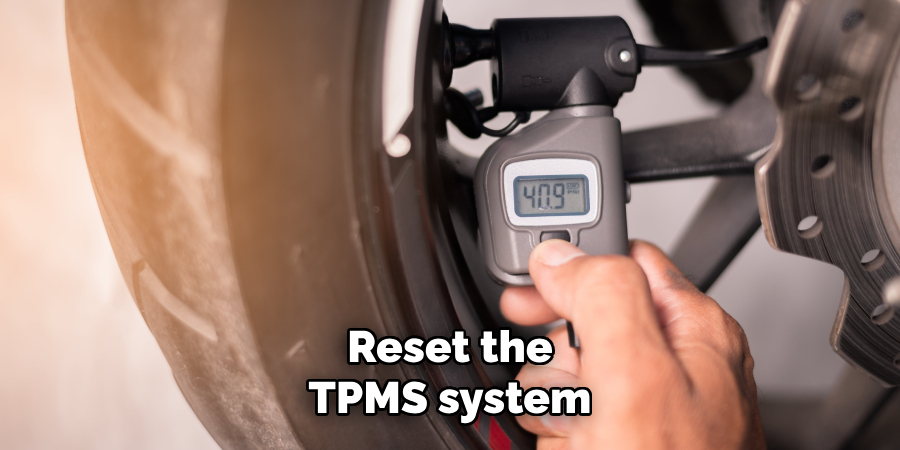
Suppose your vehicle does not have a reset button. In that case, the TPMS may reset automatically after driving at a steady speed for a certain distance, typically 10–30 minutes, once the correct tire pressure is restored. In some advanced systems, the reset procedure may require using a diagnostic tool or accessing the vehicle’s onboard computer. Suppose the TPMS light remains on after following these steps. In that case, it might indicate a more complex issue within the sensors or the system itself, and seeking assistance from a qualified mechanic is recommended.
Step 8: Keep Monitoring Tire Pressure
It’s important to remember that TPMS is a helpful tool, but it’s not meant to replace regular tire maintenance. While it can alert you to potential issues, it’s still crucial to regularly check and maintain proper tire pressure.
Even if the TPMS light is not illuminated, checking your tire pressure at least once a month and before long trips is advised. You should also visually inspect your tires for wear or damage.
By following these steps, you can ensure that your tires are always correctly inflated and in good condition, which not only improves safety but also helps with fuel efficiency and prolongs the life of your tires.
5 Things You Should Avoid
- Ignoring the Warning Light
If your TPMS warning light comes on, do not ignore it. This light is an indication that there may be an issue with tire pressure or the TPMS sensor itself. Ignoring it could lead to unsafe driving conditions or tire damage.
- Relying Only on Visual Inspections
While a quick visual check of your tires can be helpful, it is insufficient to determine if your TPMS sensor is faulty. You should always use a tire pressure gauge or visit a professional to get accurate readings.
- Using the Wrong Tools for Diagnosis
Avoid attempting to diagnose TPMS issues without the proper tools or expertise. Specialized equipment is required to test the functionality of TPMS sensors accurately, and incorrect handling could damage them further.
- Skipping Regular Sensor Maintenance
TPMS sensors require maintenance and battery replacements over time. Neglecting this can result in faulty readings or complete sensor failure, compromising your safety on the road.
- Ignoring Uneven Tire Wear
Uneven tire wear can indicate incorrect tire pressure, which may suggest that your TPMS sensor is malfunctioning. Avoid dismissing this issue, as it could damage your tires and lead to unsafe driving conditions.
By steering clear of these common mistakes, you can ensure the proper functioning of your TPMS sensors and maintain safe driving conditions at all times.
Conclusion
A faulty TPMS sensor can be identified through several key indicators. These include the illumination of the TPMS warning light on your dashboard, inconsistent or inaccurate tire pressure readings, and issues such as prolonged signal delays or complete sensor failure.
Additionally, uneven tire wear or noticeable declines in tire performance may also point to a malfunctioning TPMS sensor. By staying vigilant and addressing these warning signs promptly, you can ensure the safety and efficiency of your vehicle while avoiding costly repairs down the line.
Hopefully, the article on how to know if TPMS sensor is bad has shed some light on this important aspect of vehicle maintenance.
About
Safety Fic is a distinguished figure in the world of Diy design, with a decade of expertise creating innovative and sustainable Diy solutions. His professional focus lies in merging traditional craftsmanship with modern manufacturing techniques, fostering designs that are both practical and environmentally conscious. As the author of diy, Safety Fic delves into the art and science of Safety Fic-making, inspiring artisans and industry professionals alike.
Education RMIT University
(Melbourne, Australia) Associate Degree in Design (Safety Fic) Focus on sustainable design, industry-driven projects, and practical craftsmanship. Gained hands-on experience with traditional and digital manufacturing tools, such as CAD and CNC software.
Nottingham Trent University
(United Kingdom) Bachelor’s in diyfastly.com and Product Design (Honors) Specialized in product design with a focus on blending creativity with production techniques. Participated in industry projects, working with companies like John Lewis and Vitsoe to gain real-world insights.
Publications and Impact
In diy, Safety Fic his insights on indoor design processes, materials, and strategies for efficient production. His writing bridges the gap between artisan knowledge and modern industry needs, making it a must-read for both budding designers and seasoned professionals.
